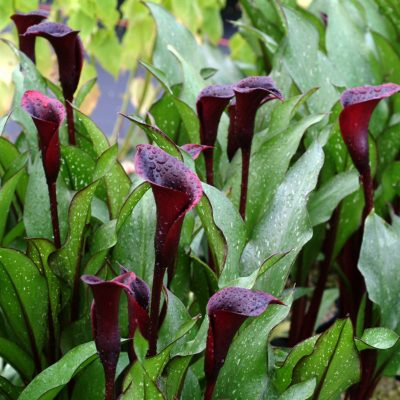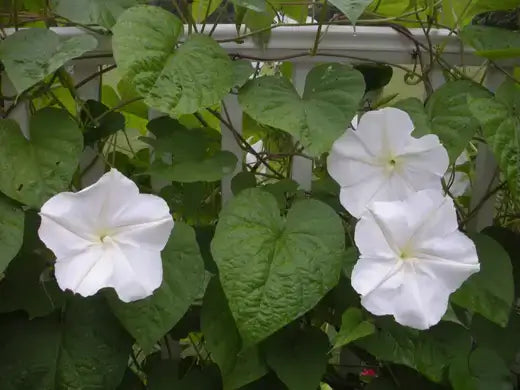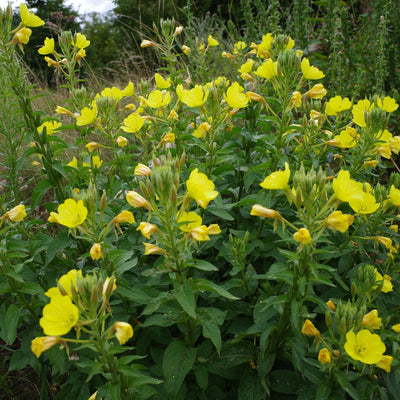Gardening In the Nighttime
Are the fireflies out yet where you live? An odd chemical reaction in their bodies causes the effect we like so much to sit and watch in the evening.
If you do happen to be someone who enjoys being outside as the evening begins to cool down, consider planting groups of white flowers around your sitting area. The white will make them glow and be visible longer than other shades.
Moonflower, an attractive vine, is an excellent option for an evening garden. So, too, are basics like the tried and true white petunia. There are several good options among our perennials.
Source of Information on Gardening best seen at Night
https://www.tnnursery.net
The Enchantment of Gardening in the Nighttime: Cultivating Magic Under the Stars
Gardening, often associated with the sun's warm rays and the vibrant colors of daylight, takes on a mystical allure when practiced under the cloak of darkness. The concept of gardening in the nighttime evokes images of secret gardens, where moonbeams dance upon petals and nocturnal creatures serenade the gardener with their songs. In this exploration, we delve into the enchanting world of nighttime gardening, uncovering its beauty, practicalities, and the magic it bestows upon the garden and the gardener.
The Nighttime Gardening: A Tapestry of Mystery and Wonder
As the sun begins to set and the sky takes on a deep, rich hue, the garden undergoes a remarkable transformation. The air becomes more relaxed, and the atmosphere becomes more mysterious, as though the garden is preparing to reveal its secrets. As the light fades, the shadows grow longer, and the colors of the flowers and foliage become more intense, taking on new depth and vibrancy. The garden's fragrances become more potent, as though they are being released from some hidden reservoir.
As the moon rises, it casts an otherworldly light on the garden, casting long, enchanting shadows on the ground and illuminating the foliage in a soft, silver glow. The pathways become shrouded in shadows, creating an inviting and mysterious ambiance. The leaves of the plants take on a new life as if dancing in the moonlight. The garden becomes a symphony of senses, with the rustling of leaves and the chirping of crickets providing a soothing backdrop to the sensory feast.
In this nocturnal wonderland, the moon becomes the garden's guiding light, casting its ethereal glow on the winding paths and creating enchanting silhouettes on the foliage. It is a world of magic and mystery, where the every day becomes terrific, and the familiar becomes new.
In the night garden, plants take on a different persona. Flowers that bloom during the day may close their petals while others unfurl into their nocturnal glory, releasing intoxicating scents that lure pollinators under darkness. Night-blooming jasmine, moonflowers, and evening primroses become the garden stars, their delicate blooms shining like celestial orbs against the velvety backdrop of night.

The Practicalities of Nighttime Gardening: Harnessing Darkness for Growth
Night gardening can be an enchanting experience, but it also requires careful consideration of practical factors to ensure the garden's health and the gardener's safety. It is essential to plan and adapt to successfully garden at night. This may involve selecting plants that thrive in low light conditions, incorporating lighting features to aid visibility, and protecting against nocturnal pests. Additionally, the gardener should prioritize their safety by wearing appropriate clothing and footwear, using tools with caution, and being aware of any potential hazards, such as uneven terrain or sharp objects. By taking these precautions, one can fully enjoy the beauty and tranquility of a night garden while maintaining a safe and healthy environment.
Gardening during the night can be a unique and enjoyable experience. However, it can also present some challenges that must be managed to provide a successful outcome. One of the primary challenges of nighttime gardening is visibility. It is challenging to navigate the more accessible end to plants without proper illumination.
To overcome this challenge, it's crucial to have adequate lighting solutions that balance functionality and ambiance. Soft and ambient lighting solutions are the best options, as they provide enough brightness to see what you are doing without disrupting the tranquility of the night. Some of the best lighting solutions for nighttime gardening include solar-powered lanterns, fairy lights, or strategically placed candles.
Solar-powered lanterns are an excellent option because they don't require electricity and are environmentally friendly. They come in many different shapes and sizes, and you can place them on the ground or hang them from trees or fences. Fairy lights are another excellent choice. They are tiny, delicate lights that you can string through trees, shrubs, and other plants for a magical effect. Lastly, strategically placed candles can provide a warm and welcoming glow, creating a cozy atmosphere to enjoy while you tend to your plants.
In conclusion, while nighttime gardening can present some challenges, proper illumination can make all the difference. Soft and ambient lighting solutions, such as solar-powered lanterns, fairy lights, or strategically placed candles, can provide functionality and ambiance without disrupting the peacefulness of the night.
Additionally, selecting plants that thrive in low-light conditions is essential for a successful night garden. Shade-loving varieties such as hostas, ferns, and impatiens can flourish under the moon's gentle glow while minimizing the need for artificial lighting. Companion planting strategies can also maximize the garden's productivity, with certain plants complementing each other's growth patterns and nutrient requirements.
Furthermore, water management is paramount in nighttime gardening, as moisture levels can fluctuate significantly during the cooler nighttime hours. Drip irrigation techniques or soaker hoses can provide water straight to the roots, decreasing evaporation and ensuring optimal hydration for plants without disturbing the serenity of the night.
The Magic of Nighttime Gardening: Nurturing the Soul Under the Stars
Beyond the practicalities, nighttime gardening offers a profound connection to the natural world and a respite from the hustle and bustle of daily life. Engaging in the timeless ritual of tending to plants under the cloak of darkness fosters a sense of tranquility and introspection, allowing the gardener to immerse themselves fully in the present moment.
The sensory experience of the night garden is unparalleled, awakening dormant senses and heightening awareness of the subtle nuances of the natural world. The rustle of leaves in the breeze, the chorus of nocturnal insects, and the fragrance of blooming flowers create a symphony of sensations that nourish the soul and soothe the spirit.
Moreover, gardening in the nighttime offers a unique opportunity for stargazing and celestial contemplation. With urban light pollution diminishing the visibility of the night sky, the garden becomes a sanctuary for reconnecting with the cosmos and marveling at the wonders of the universe. Observing constellations, tracking the moon's phases, or simply basking in the beauty of the starlit sky fosters a sense of awe and reverence for the interconnectedness of all living things.

Embracing the Magic of Gardening in the Nighttime
In the tapestry of nature's rhythms, the night garden emerges as a luminous thread, weaving together beauty, practicality, and transcendence. By embracing the enchantment of gardening in the nighttime, we open ourselves to a world of mystery and wonder, where the boundaries between the mundane and the magical dissolve under the moon's shimmering light.
As we tend to our gardens under the cloak of darkness, we become stewards of a sacred sanctuary, nurturing the plants that thrive under the stars and the inner landscape of our souls. In the stillness of the night, amidst the fragrance of blooming flowers and the symphony of nocturnal creatures, we find solace, inspiration, and a profound connection to the timeless rhythms of the natural world.

